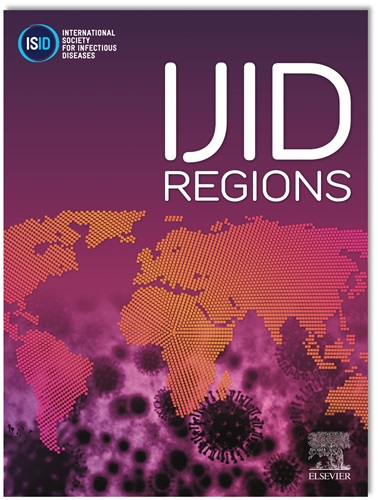依从性咨询结合护理点尿替诺福韦检测对替诺福韦-拉米夫定-多鲁地韦治疗失败个体病毒学抑制的影响:一项干预前后研究。
IF 4.8
2区 医学
Q1 INFECTIOUS DISEASES
引用次数: 0
摘要
目的:研究是否可以使用即时尿替诺福韦检测咨询来改善病毒学失败(VF)患者在≥1轮强化依从性咨询(EAC)后的病毒学抑制(VS)。方法:参与者来自纳米比亚的42家诊所。在每个月的药物提取中,参与者完成了即时尿液测试,并收到了该测试所告知的EAC (EAC+)。如果在EAC+治疗3个月后仍未达到VS,则提供最多3轮EAC+治疗,并在第9个月进行耐药性测试。结果:在纳米比亚42家诊所的310名潜在符合条件的参与者中,我们招募了211名VF参与者(中位年龄33岁,61%为女性);195人达到M3,定义为接受EAC+并随访病毒载量检测;与干预前的40%(22/55)相比,干预前M9的VS为97%(181/186),而M3内的VS为169 (87%,p.001)。结论:尿替诺福韦检测与依从性咨询相结合,对于替诺福韦为基础的方案失败的参与者有可能成为一种具有成本效益的干预措施,将TLD失败的VS增加到97%。这种前后干预的令人鼓舞的结果将在一项随机试验中进行严格的测试。本文章由计算机程序翻译,如有差异,请以英文原文为准。
The impact of adherence counseling incorporating a point of care urine tenofovir assay on virologic suppression among individuals failing tenofovir-lamivudine-dolutegravir: A pre-post intervention study
Objectives
To examine if point-of-care (POC) urine tenofovir testing-informed counseling could be used to improve virologic suppression (VS) among participants with virologic failure (VF) after ≥1 prior round of enhanced adherence counseling (EAC).
Methods
Participants were enrolled from 42 clinics across Namibia. At each monthly medication pick-up, participants completed the POC urine test and received EAC informed by this testing (EAC+). If VS was not achieved after 3 months of EAC+, up to 3 additional rounds of EAC+ were provided, with resistance testing at month (M)9.
Results
Of 310 potentially eligible participants across 42 clinics in Namibia, we enrolled 211 participants with VF (median age 33 years, 61% female); 195 reached M3 defined as receiving EAC+ and follow-up viral load testing; 169 achieved VS within M3 (87%, P < 0.001) and 97% by M9 (181/186) compared to 40% (22/55) prior to the intervention (P < 0.001). Resistance testing was performed in five remaining participants with VF at M9, of whom 1/5 (20%) developed dolutegravir resistance.
Conclusion
The urine tenofovir assay when incorporated into adherence counseling has potential to be a cost-effective intervention among participants failing tenofovir-based regimens, increasing VS to 97% in those failing Tenofovir-Lamivudine-Dolutegravir. Encouraging results of this pre-post intervention will be rigorously tested in a randomized trial.
求助全文
通过发布文献求助,成功后即可免费获取论文全文。
去求助
来源期刊
CiteScore
18.90
自引率
2.40%
发文量
1020
审稿时长
30 days
期刊介绍:
International Journal of Infectious Diseases (IJID)
Publisher: International Society for Infectious Diseases
Publication Frequency: Monthly
Type: Peer-reviewed, Open Access
Scope:
Publishes original clinical and laboratory-based research.
Reports clinical trials, reviews, and some case reports.
Focuses on epidemiology, clinical diagnosis, treatment, and control of infectious diseases.
Emphasizes diseases common in under-resourced countries.

 求助内容:
求助内容: 应助结果提醒方式:
应助结果提醒方式:


